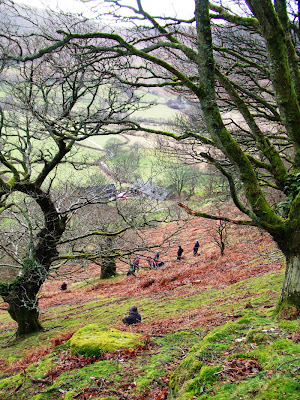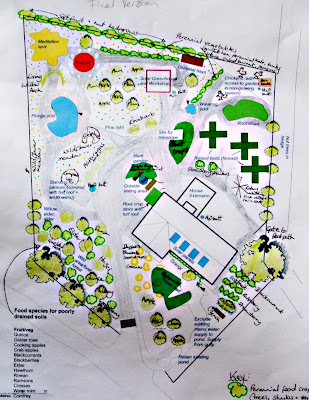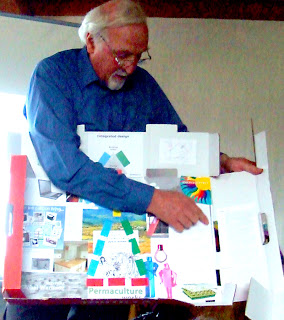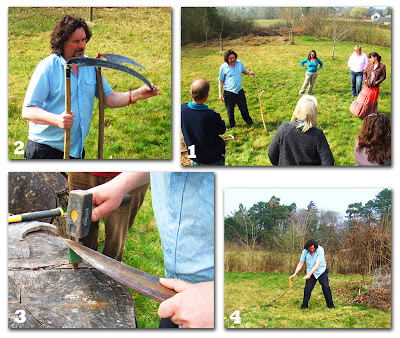I was delighted to get a request to write a guest article for my blog from a college graduate of the University of Central Florida, Krista Peterson. Krista is an aspiring writer and Health and Safety Advocate, she is passionate about the wellness of others in her community and for the health of the environment. She says she uses her writings to spread awareness of such issues to help encourage others everywhere to live the healthiest and most eco-friendly lifestyles possible. Brilliant! I think it's great that more and more people are waking up to the fact we are going to be forced to lead very different lives in the near future. Here's Krista's article:
 |
| Students at UCF are helping to develop an array of tools to make the solar panels that make up solar farms easier to install and monitor. UCF News Report, "Greening the World's Energy" here. |
A Primer on Permaculture
With the spring finally springing and the flowers blooming it’s getting to be a lovely time to be outdoors. This spring, as you make your way outdoors be sure and take a moment to appreciate the beauty of your natural surroundings and consider that unless we make changes to be sure that we have sustainable development it may not be there much longer. Of course making the change to
permaculture and sustainable development is a serious and major commitment, but here are three easy ways to get started!
Eat Local and Organic
While it may be the way of the future, it’s not always possible right now for everyone to make the switch over to co-op farms, where rather than having factories produce food you purchase in supermarkets (yech!) a community bonds together to help raise livestock and plants in a natural, sustainable way. But most people are able to support these growing sustainable farms by purchasing local organic food through a farmers market or
local co-op.
Garden and Compost
Of course, another great way to get your food locally is by starting your own garden! Starting a sustainable garden can save you a little green too, even up to $800 dollars a year in food costs. Growing a garden might seem daunting at first but sustainable gardening can be pretty easy, and is a great skill to learn. And just in case you end up not needing as much food as you grow start you can start a compost! Every eight months the UK produces enough
waste to fill Lake Windermere. If everyone simply dropped their food scraps, grass clippings, newspaper, cardboard, and coffee grounds into a compost we could dramatically lower the waste you leave behind.
Natural Building
Natural building is a big part of permaculture because currently our building processes simply are not sustainable. It can be a large undertaking, but building a house using primarily natural materials like logs seriously lessens your global impact and is likely to be a key facet in human housing in the future. There are plenty of
resources available if you’re up to the challenge of natural building, but if not you can always look into more natural modifications of your current home. For instance,
soy-based insulation foam is far more sustainable and healthier than other types of insulation, and can also protect you from
mesothelioma cancer!
While a major culture change towards permaculture definitely ought to be in your plans for the future, these three easy steps can get you started down the path we all need to start walking. It’s time for us to turn away from unnatural, unhealthy manufacturing ways and start examining local natural solutions within our ecosystems.
Thanks Krista! Great stuff, I'm looking forward to reading your own blog once it's up and running.






















